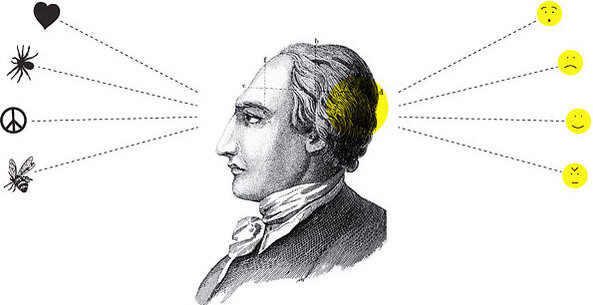Last Friday, I had the honor of escorting my 9-year-old daughter and 75 of her closest 3rd-grade peers on a field trip in historic Philadelphia. It was a beautiful day, so I was looking forward to the adventure. But, to be honest, those of us who live in Philly get a little tired of these tours of the founding of our nation. We hear the same information over and over every time we have an out-of-town guest who wants to see the sites.
When we arrived at the Betsy Ross House (for the umpteenth time), I could tell this would not be an ordinary walk through history. What made it unique? Our guides introduced themselves as “Storytellers.”
Now all tour guides are essentially storytellers, but these folks were different. Storytelling was the primary way they told us the tedious and potentially boring details of history. They highlighted characters, they acted out scenes and they created visual points of reference by engaging the audience in the ongoing and energetic “Human Timeline!”
It worked. We all had a great time; it broke up the monotony of walking the same city blocks several times; and everybody (kids and adults) seemed to remember some unusual detail. I know I learned something new, and I’ve been touring these places for almost 20 years. Even better, it spurred MORE storytelling on the way back to school and around the dinner table that night.
This was a fitting way for me to end two weeks of “Storytelling” workshops and webinars – part of our Public Image Works series currently being offered to 25 grantee groups of the Geraldine R. Dodge Foundation.
Our series is designed to help good groups get the attention their important missions demand. Public Image Works combines organizing principles with the best marketing practices around – and Storytelling is a new part of our series co-presented by Charlie Bowe.
Communications from non-profits can often be too practical, too complex and not nearly interesting enough to call people to action. This Storytelling module was added to help grantees tap into the passion and magic that is behind their work and share it with the people who need to hear their stories the most. Here are some highlights:
WHY STORYTELLING? IT ENGAGES OUR BRAINS.
There’s a difference between language processing and information processing. Storytelling is the best way to convey both so information gets remembered and used by our brains. Check out more at “What listening to a story does to our brains.” By Leo Widrich
WHAT MAKES A GOOD STORY? GET CREATIVE.
In public interest work we tend to leap past stories into the finer details of our issues and work. But good stories are interesting and compelling and are a great way to engage people first. Every great story carries certain elements that make them work. Consider how you might be a more creative storyteller by tapping into age-old characteristics like these:
- A Hero
- A Unique Opportunity
- A Goal
- An Antagonist
- An Inner Conflict
- “Divine” Intervention
- A Climax
TELL ME A STORY
Remember how it feels when someone tells you a story? Even if it’s been told before, you connect because the story is being told to YOU. The most important breakthrough you can make in storytelling is to speak to your audience and their needs. Now, this doesn’t mean that you have a different story for every audience – that’s a common misconception that derails people when crafting stories about their work. The core elements of your story should be solid and set (Hero, Goal, Conflict, Call to Action). What you need to do instead is FRAME your story based on the audience and their needs. Start by asking a question, or tapping into a deep, universal emotion. There are a lot of different ways you can start your story to touch your audiences and I can guarantee they don’t start with “We are a 501c3 organization…”
In today’s rapid-fire communications age, it might seem like we don’t have time for good stories. But, with the issues we face and the vision we have for a better world, we can’t afford NOT to tell better stories. It’ll take more creativity and some practice, but we have all the tools we need in the people, places and narratives of our work.
When I overheard my daughter talking about the Grimke Sisters instead of Benjamin Franklin on the walk back to school, I knew those “Storytellers” had made a lasting impression on us. They told us a story that was worth remembering and repeating. That’s what storytelling can do more than almost any other form of communication. It’s exciting to think of all the stories that can be told to celebrate and promote important social issues. What’s yours?
About Social Impact Studios:
Social Impact Studios is a creative hub for important social issues. By collaborating with others who focus on the public good, we build awareness efforts that get noticed and achieve idealistic goals. We believe that thoughtful, beautiful and meaningful communication is the most beneficial way to engage and motivate people. From concept to creation, we design action plans, visuals, messaging and moving grassroots experiences together that do just that!
Photo Credit: NYTimes via Leo Widrich’s blog


